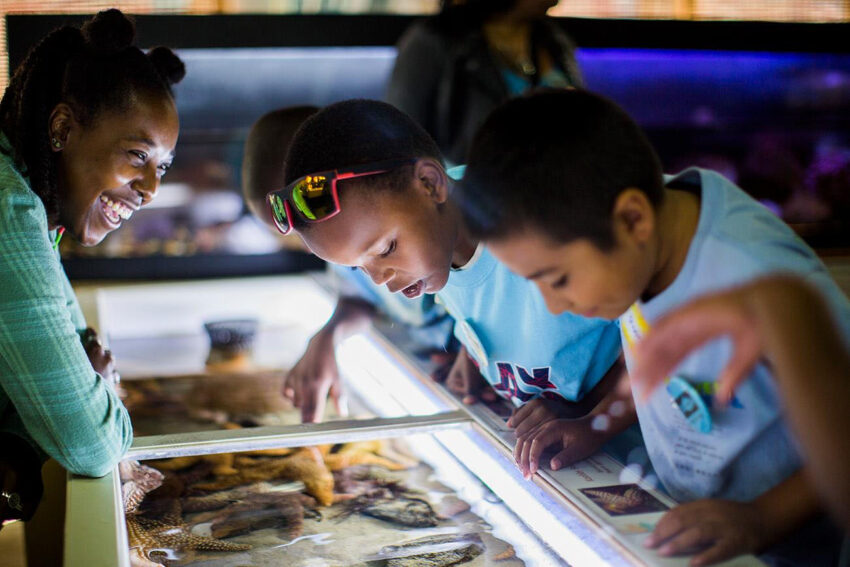Protecting What We Love – Sharks in Santa Monica Bay
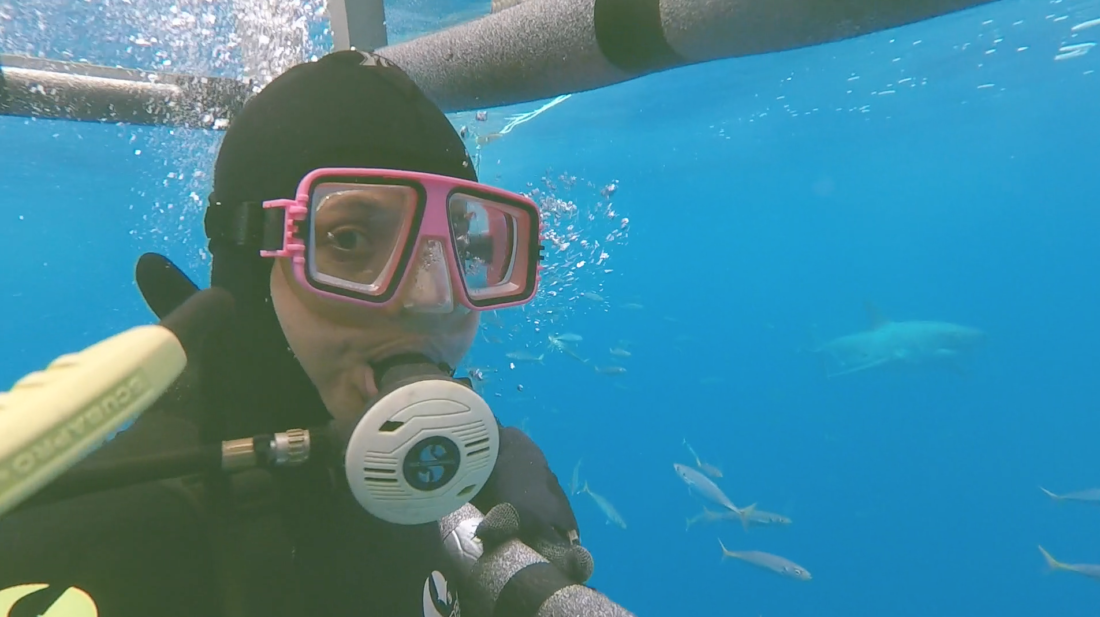
Apryl Boyle, Heal the Bay’s resident shark guru, says that when it comes to apex predators all you need is love!
When people watch the 1975 movie “Jaws” one of two things usually happens. They become completely terrified to go in any body of water, including their bathtub, or they are motivated to learn more about sharks. I am part of the latter group.
I don’t recall exactly when I first watched this classic tale. But I do remember my instant identification with the shark researcher character, Matt Hooper. Richard Dreyfuss plays Hooper as a laid-back, unaffected rich kid fascinated by sharks. He’s the voice of reason and remains calm, which is opposite of the salty boat captain, Quint. He assists protagonist Chief Brody in finding and dealing with the great white shark terrorizing the New England island in the movie.
The film turbo-charged Steven Spielberg’s career and became a worldwide box office hit. It also became a cultural touchstone that catalyzed a global fear of sharks. It sparked sequels, spin-offs, and a “justifiable” reason for people to be afraid of going into the ocean. The filmmakers effectively created a suspenseful thriller by accentuating the fear of the unknown, hidden natural world. After all, who knows what really lurks beneath the waves? The creators tapped into an anxiety that is unmatched by immersion into any other natural environment.
When you swim in the ocean, you cannot see everything underneath or around you. You cannot breathe under water without aid. And the inhabitants of the ocean are far better swimmers than you and I will ever be. For many people this is terrifying, but for marine lovers it’s a source of wonder and excitement—not fear.
From a young age, I have been enamored with all creatures, regardless of their size, shape, or teeth. But the common myths about sharks seemed to always be at odds with my unwavering passion. When I was in college I was actually told that my last words would be, “That shark won’t bite me.”
Fast-forward a few decades.
After receiving my master’s degree in Biomedical Science and working at various aquariums throughout the U.S., I’ve become an expert in the shark research field. I’ve been a part of the well-known “Shark Week” programming on Discovery Channel. I’ve been tapped as an expert in the media not only for sharks, but also for marine research.
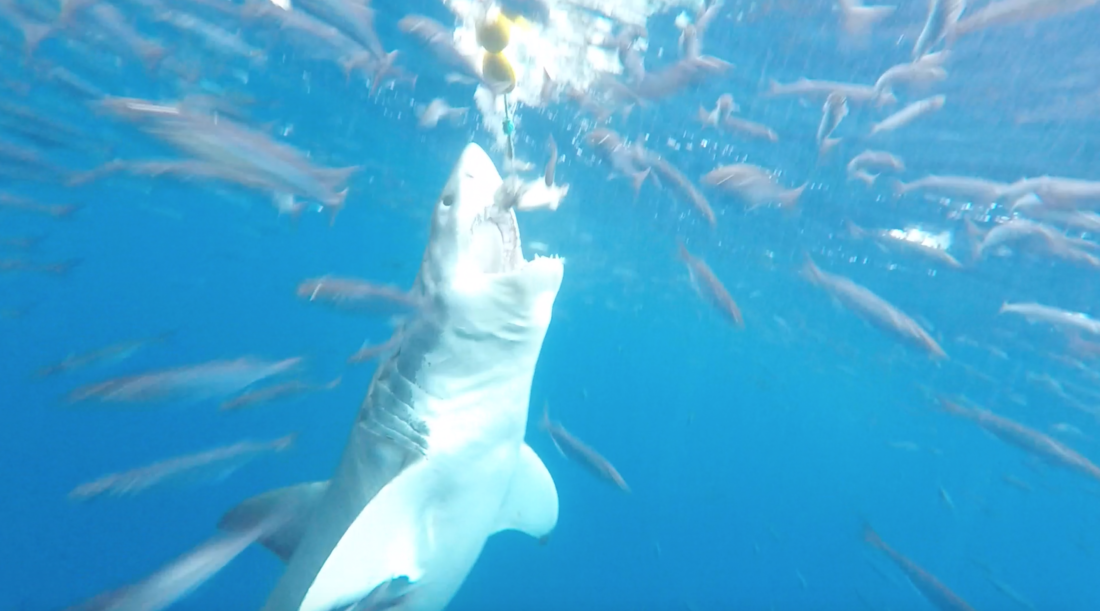 A great white shark observed by Apryl in Guadalupe Island, Mexico. Watch the video.
A great white shark observed by Apryl in Guadalupe Island, Mexico. Watch the video.
In my travels to Fiji, Peru and Mexico I’ve observed beautiful sharks of all types. My trips have even brought me face-to-face with 18-foot great whites, as well as blue sharks, white tips, tiger sharks, nurse sharks, and many more species. I’ve never had an aggressive encounter with sharks over the decades of countless dives.
Now, as the Associate Director of Heal the Bay’s Santa Monica Pier Aquarium, I get to take care of three types of shark and a host of other ocean inhabitants and get paid to do it. This is my job!
I guess you could say that I’ve become a real-life Matt Hooper. And the kid in me is just as excited about sharks as when I first saw “Jaws.”
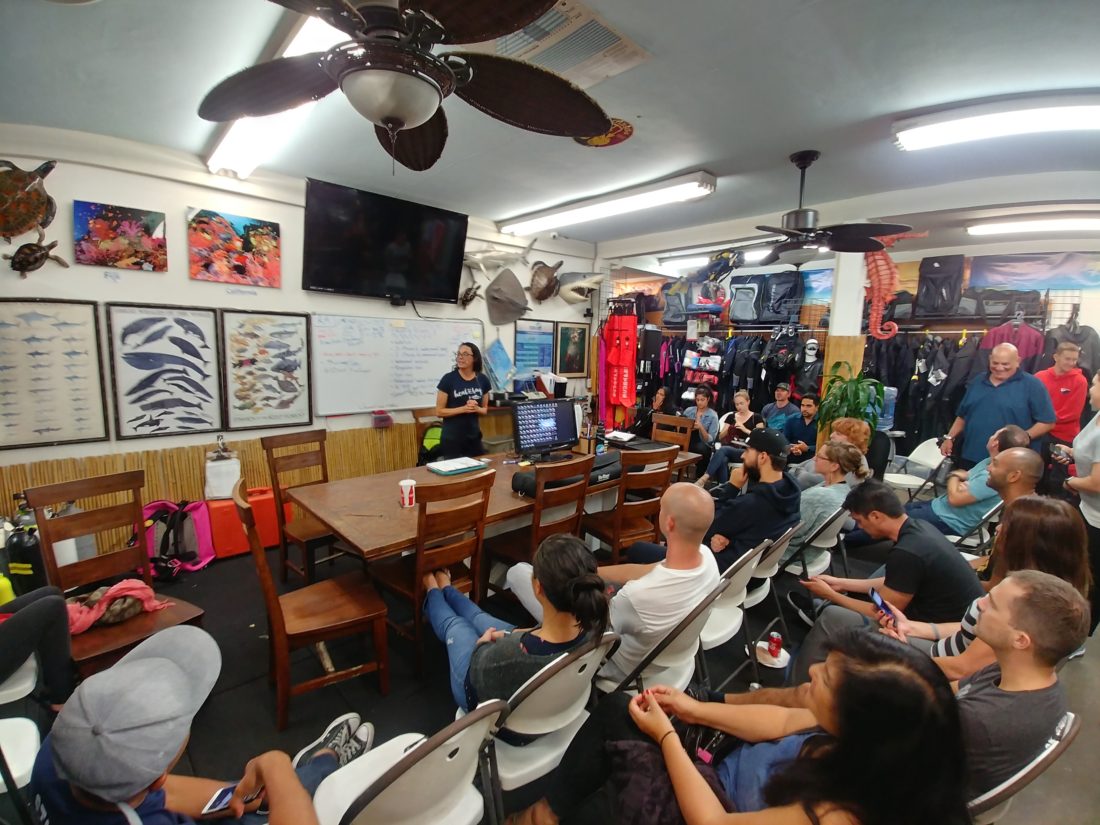 Apryl speaks at EcoDive Center’s Dive Club to get the group excited for Coastal Cleanup Day, which features underwater cleanup locations in Santa Monica Bay and helps to keep the local marine habitat clean for sharks and other aquatic animals.
Apryl speaks at EcoDive Center’s Dive Club to get the group excited for Coastal Cleanup Day, which features underwater cleanup locations in Santa Monica Bay and helps to keep the local marine habitat clean for sharks and other aquatic animals.
The bottom line is that sharks need our protection. As apex predators they keep marine populations stable and thriving. They help regulate the health of the world’s ocean, which is a major source of oxygen on our planet.
Despite these benefits, humans kill an estimated 11,000 sharks every hour (!) and mostly in the horrific practice of finning. A shark is taken out of the water, its fins are cut off for use in shark-fin soup, a supposed “delicacy.” The butchered animal is thrown back into the water, where it can take up to three grueling days to finally suffocate and die.
Slowly, popular culture is starting to replace fear with facts. Peter Benchley, the late creator of the book and screenplay for “Jaws” realized the harm he had done with his product and, together with his wife, spent the rest of his career as a shark advocate. Programming during “Shark Week” has also become less alarmist since its early days. Effective nonprofits have been formed to help protect sharks locally and globally. Legislators have taken action to try and curb the atrocity of shark finning, such as California lawmakers forbidding the importation of shark fins in our state.
I’ve been surfing at El Porto in the South Bay during what I call “baby white shark season” – the time when newborns and juveniles are migrating. I’ve seen juvenile sharks in the lineup and they want nothing to do with surfers. They’re looking for one of their favorite food, stingrays. Young-of-the-year, or infant great white sharks, are born at around 4 feet long. They’re not bullies and don’t try to pick on anything their size or larger (aka humans).
Even 18-foot great whites don’t want to eat humans. We simply aren’t their food. They’re actually picky eaters and prefer the dense fat of seals and sea lions. There is no such thing as a shark “attack” – no great white is out to deliberately stalk and target human beings with some kind of premeditation or vengeance. In the extremely rare case of a shark encounter, it’s usually the case that a splashing swimmer or surfer is mistaken for a shark’s normal prey – a distressed animal.
To underscore how rare it is for someone to be seriously harmed by a shark in the ocean, you may want to remember some of these factoids. More people die each year from eating hot dogs than by shark bites – by far! You are 25 times more likely to be killed by a random strike of lightning than by a shark encounter.
What can you do to help these 400-million-year-old species?
Become a shark ambassador and educate yourself. Speak up for shark-friendly protections. Come visit Heal the Bay’s Aquarium and see our shark nursery and learn why we need to safeguard these special animals.
Sharks are essentially dinosaurs that have survived mass extinctions, but now face such great pressure from the human population that they may not survive for much longer. Whether or not you have a fear of these animals, you need to be concerned about their survival because their survival mirrors the health and biodiversity in our precious seas.
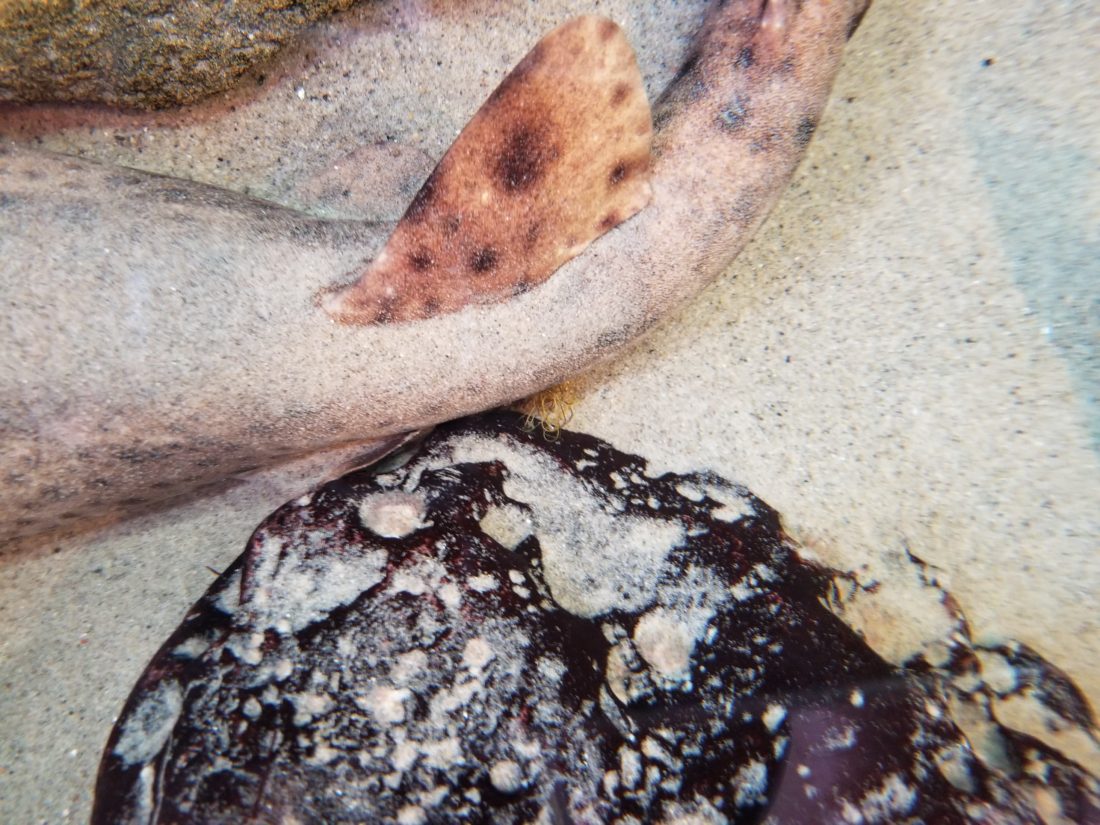 A swell shark lays eggs at the Santa Monica Pier Aquarium.
A swell shark lays eggs at the Santa Monica Pier Aquarium.
Want to get an up-close view or our local sharks? Come down to the Santa Monica Pier Aquarium for our Shark Sunday programs



